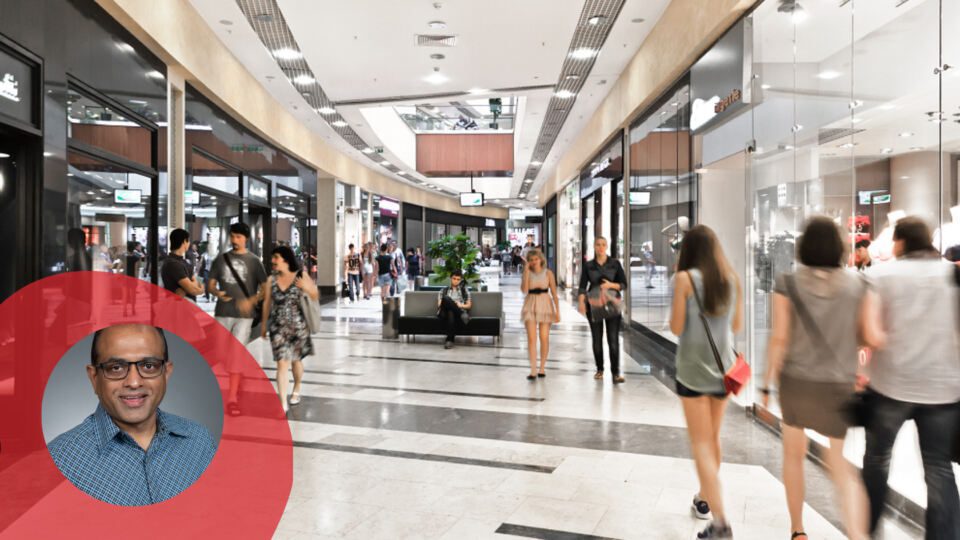Shopping center owners and operators have faced rapid shifts in the retail landscape over the last few years due, in part, to an increase in online shopping and the buy online, pick up in-store response to the COVID-19 pandemic. Now that restrictions are being lifted and people are excited to visit stores again, shopping center owners and operators have an opportunity to simultaneously transform the shopper experience and maximize revenue. Data-driven insights are the key.
Smart Tech is Smart Business
Ecommerce businesses easily capture data about website visitors, purchase trends, the duration of shopper visits online and much more. Brick-and-mortar retailers are increasingly implementing tech solutions in an effort to gather similar insights. In that vein, retail store managers and shopping center owners/operators can leverage data-driven technologies to make strategic business decisions that will benefit their bottom line.
Data-generating technologies can offer a variety of metrics (depending on the specific technology) such as where shoppers are going and how long they spend between specific locations or stores, and can help inform decisions about everything from labor allocation to sales conversion. The technologies we’re referring to include video analytics and computer vision, thermal sensors, motion detectors, geospatial analytics, CRM omnichannel solutions and AR/VR to name a few, all of which cover a range of capabilities and price points.
Let’s take a look at how these solutions can provide insight needed for stronger shopping center lease negotiations, more effective events and more significant visitor engagement.
Leveraging Data for Stronger Lease Negotiations
With limited common area and tenant insight, shopping center owners/operators are unable to analyze shopper behavior and foot traffic data, thereby lacking leverage for lease agreement negotiations.
Video analytics and computer vision technology gathers comprehensive data on shopper behavior and on-premise trends. With this artificial intelligence (AI) technology, users can receive actionable insights about shopping center, zone and tenant footfall, which fosters a better understanding of where shoppers are going, the path they’re taking to get to their destinations and how much time they spend in a particular location. This helps shopping center managers to optimize tenant mix and maximize lease revenue by charging higher rents in prime locations based on real-time data.
Geospatial analytics is also helpful in understanding the value of retailers’ locations within the shopping center. This technology can use AI to gather environmental data, which could offer data about how weather patterns, natural light, temperature, energy consumption and more are impacting shopper behavior.
Making Events More Effective
Analyzing marketing initiatives such as onsite events can help to identify opportunities for events and promotions that result in increased shopper traffic and community draw. With data on the number of shoppers that entered an event area sponsored by one tenant, a shopping center owner/operator can measure the efficacy of marketing and signage initiatives and identify how increased traffic in that zone benefits other tenants.
Additionally, the ROI on marketing initiatives can help owners/operators plan and promote new store openings for maximum impact and participation. For example, events can be planned around store openings like a free yoga class in conjunction with a lifestyle brand store opening, or play groups on certain days near stores that carry children’s toys. These events can generate additional interest in these stores, subsequently increasing foot traffic and store revenues.
To justify budgets and track progress of events and the subsequent corresponding results, data is crucial. Thermal sensors and motion detectors offer object-counting capabilities that, when used strategically with other measurement tools in place, can, at a basic level, provide valuable insights. Thermal sensors work by measuring body heat emitting from each person, counting “objects” that are producing certain levels of heat (which it can differentiate as humans). Motion detectors observe when an infrared ray is interrupted by movement.
It’s worth noting that motion sensors also capture foot traffic but cannot tell the difference between employees versus shoppers, nor can they identify demographic information of shopping center visitors. A lack of differentiation between employees and shoppers translates into imprecise data for analysis.
Video analytics using camera vision can detect demographic data, such as age range and presumed gender, to determine how effective promotional and event efforts were in drawing the desired attendees.
Driving Shopper Engagement
While omnichannel strategies were important to have pre-pandemic, it’s essentially a requirement for brick-and-mortar sellers now. Retail tenants likely have their own omnichannel strategies, but shopping center owners/operators also need to implement technologies that will bridge the gap between online and in-store. Solutions like opt-in free on-premise WiFi and shopping center apps offering promotions and vouchers can open the pipeline for continued engagement while also gathering data about shopping patterns.
WiFi data can help shopping center owners/operators analyze foot traffic, but without 100% participation, data will be incomplete or inaccurate. WiFi data is collected only if a shopper’s smartphone is connected to the shopping center’s WiFi network, so providing incentives to connect to the WiFi network (via coupons or other offers) can be key to getting more data.
With other solutions that can measure comprehensive footfall data, shopping center owners/operators can identify opportunities. For example, adding a pop-up bakery in a “cold” spot with limited foot traffic can help to increase property circulation, and owners/operators can experiment by A/B testing these initiatives to gauge their success.
Other solutions are more directly shopper-facing, using natural touch points to interface with shoppers throughout their visit:
- Smart kiosks, whether in-store or in common areas, can utilize computer vision to identify demographics and offer shoppers curated content, like product availability in stores, product recommendations and pricing. This offers shoppers a highly personalized shopping experience, likely to result in more sales and return visits.
- AR/VR capabilities give shoppers the opportunity to engage with their mobile devices while onsite. For example, shoppers could be notified to virtually try on clothes or makeup as they walk by a storefront.
- According to The Future of the Mall report by Deloitte, “Online concierge services, digitized browsing, and virtual fitting rooms…” will “…enhance a customer’s shopping experience,” thereby creating more reason to visit a shopping center, offering a range of experiences that keep shoppers engaged.
The Bottom Line
With the right mix of data-driven technologies, shopping center owners/operators can position their properties as desirable destinations and revenue leaders in the retail space by fostering increased shopper engagement, improving and increasing traffic flow and generating higher revenues from tenants and shoppers alike.
Rohan Sanil is CEO and Co-founder of Deep North. He has over two decades of product, business and entrepreneurial leadership in the video analytics space. Previously, he founded Akiira Media Systems, Atstream Networks and Tri-Cad, where he was instrumental in product development, business development and raising capital. Sanil holds an M.S. Degree in Management Science from the University of Dayton, Ohio, and a B.S. in Mechanical Engineering from Karnataka University, India.








